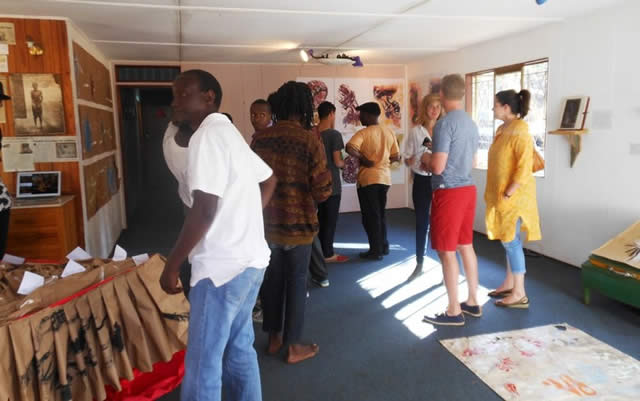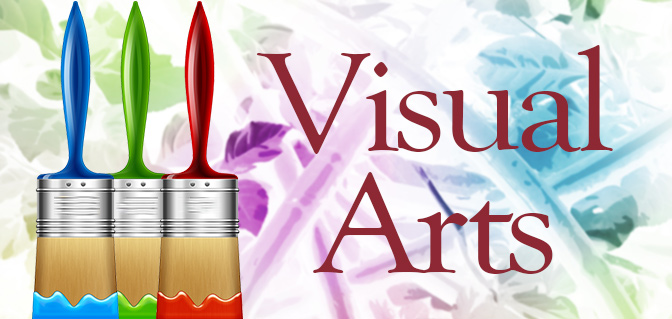Dzimbanhete hosts artist in residency programme

Stephen Garan’ang Visual Arts—
International artist-in-residence programmes are crucial for artists’ development both artistically and individually as they shove them further away from their inner circles and comfort zones of their practice. The residencies offer critical space for creative experimentation, production, learning from others and networking. They allow an individual to explore his or her practice within another community; meeting new people, using new materials, experiencing life in a new location. Art residencies emphasise the importance of meaningful and multi-layered cultural exchange and immersion into another culture.
There is no single model, and the expectations and requirements vary greatly. The relationship between the resident and the host is often an important aspect of a residency programme. Sometimes residents become quite involved in a community — giving presentations, workshops, or collaborating with local residents. This is a carbon copy of what graced our local art scene at Dzimbanhete Arts Interactions recently.
They have just had a collaborative international exchange residency with Catinca Tabacaru Gallery artists. Practitioners from various parts of the world descended on our soil and together with local artists unravelled chaos of creative ideas and discourse which went on for almost four weeks and was celebrated on the August 15 through an amazing exhibition of the artworks created during the period. The idea of the residency came through the National Gallery of Zimbabwe’s chief curator Raphael Chikukwa who was contacted by a gallerist from New York, Catinca Tabacaru who had been following the participation of Zimbabwe at the Venice Biennale over the past three years. The two kept meeting at different art forums internationally where Catinca kept expressing her wish to bring her group of artists to Zimbabwe to work with some of the local artists whose work had received attention in the art world.
Understanding the art spaces in Zimbabwe and how the acclaimed artists had evolved in their professions, Chikukwa then introduced Catinca to Dzimbanhete Arts Interactions. In his own words Chikukwa stated; “Of the all the artists who have been to the Venice Biennale and have made their mark in the international art world, five had come from the Dzimbanhete Arts Interactions.” He further elaborated that DAI has the adequate space and professional expertise to host international art workshops and residences.
Communication between DAI and New York-based CTG directors started and a residency programme was designed and scheduled to begin in July 2015 with a selected group of local artists alongside their visiting counterparts. By July 21 Catinca’s group of artists which consisted of Justin Steiner from New York, United States, Rachel Monosov from Belgium and Xeviar Robles de Medina from Surinam had arrived. They where all booked into their lodges at the National Parks’ Boulton Atlantica lodge which is almost a kilometre from DAI where they stayed for the duration of the residency. On the 24th, they had their luncheon whereby artists met, greeted and the intentions and structures of the residency was outlined to them. The visitors had also brought a gift for DAI, which they presented that afternoon, it was a video projector, something that DAI really appreciated. Local artists who attended this luncheon included Sabina Mutsvati, Munyaradzi Mazarire, Wallen Mapondera, Gareth Nyandoro, Moffat Takadiwa, Masimba Hwati, Option Nyahunzvi, Terrence Musekiwa, Mavis Tauzeni, Admire Kamudzengerere and Franklin Dzingai.
Also present were DAI’s representatives Chikonzero Chazunguza and Jonathan Goredema who outlined the history and goals of DAI including the ideals of this workshop. Catinca Tabacaru shared the background of her gallery and her desire from the point of view of a curator and gallerist, to see this collaborative residency’s products grow formidably. Tawanda Gunda, a filmmaker and friend of DAI was also present from this very day until the very last day, documenting the highlights of this residency.
While there was a general programme for the residency, things were left to flow as was necessary and comfortable for all. The first few days were consumed shopping for materials and discussing collaborative ideas. There were two afternoons where each participant was given time to show their art portfolios and share their working philosophy.
Admire Kamudzengerere kicked off work execution with his collaborative work with Justin Steiner. With Kamudzengerere starting off from DAI, the residency venue and Steiner taking off from Boulton Atlantica the lodge, the two had a roll of craft paper each stretching 500 metres from opposite directions, painting rigorously in the scotching sun until sunset with support from the community and the two met half way with a bang of hugs. According to Admire, this piece of work symbolised “the idea of two different cultures purposefully coming to a meeting point”.
Rachel Monosov whose work is photo and video-based launched her community-based project in which almost all residency participants took part. Rachel’s work saw a village compound in close proximity to DAI being painted pink. Describing her work Rachel sated that her work was intended to challenge the circular non-governmental organisations’ mentality whereby some are seen to provide help that’s not needed or doing work that they themselves deem necessary when in fact it does not do anything for the intended beneficiaries.
Xavier Robles de Medina fell in love with the Dzimbanhete environment. His roots being in Surinam, he was attracted to the caves around Dzimbanhete. For more than a week he spent each day in silence, barefooted and alone in a cave making ink drawings on paper. Intrigued by the rock forms in half cast light he produced remarkably dense images of these boulders. Franklin Dzingai a printmaker, inspired by urban fashion got started in his usual square dimensions but quickly propelled into formidable huge yet minimalistic prints on craft paper, which he actually inherited from Kamudzengere’s project.
Option Nyahunzvi, a multi-disciplined artists used his personal research on Afrikan Spirituality as his basis for creating work. Incorporating the Guardian cloth of red white and black colors with resin. He made three forms which seem as though they are wrapped around an absent body, he then goes on to suspend the in different spaces creative intuitive movements which he then photographed presenting a futurist yet mystic appeal.








Comments